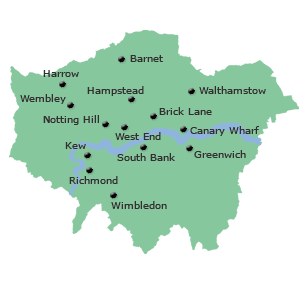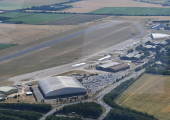
Southern England could see temperatures soar to 27°C (81°F) later this week, marking the hottest April day since 2018.
High pressure is building across the UK, bringing widespread warmth and sunshine. However, the dry spell is also heightening concerns about wildfires.
The last time April temperatures reached 27°C was in 2018 in Cambridge.
How widespread will the warmth be?
Marathon runners in London and Manchester already experienced unseasonably warm conditions over the weekend, with the London Marathon recording its fourth-warmest event on record.
This week kicks off with temperatures in England and Wales ranging between 19°C and 24°C, while Scotland and Northern Ireland hover around 16°C to 19°C under some cloud cover. A few showers are expected in northwest Scotland.
As the week progresses and skies clear further, light winds and strong sunshine will help temperatures peak on Wednesday or Thursday, reaching the highest values of 2025 so far across all four nations: 23°C in parts of Scotland and Northern Ireland, 25°C in Wales, and up to 27°C in England, particularly in London, the Home Counties, and Cambridgeshire.
Coastal areas will feel cooler due to sea breezes, though UV levels will stay high.
Is this a heatwave?
Despite temperatures being up to 10 degrees above average, this stretch of warm weather doesn’t technically qualify as a heatwave. For that, three consecutive days must reach specific heatwave thresholds, which vary across the UK.
Regardless, the strength of the sun this time of year is similar to August, so UV exposure will be high. Hay fever sufferers should also prepare for rising pollen levels.
How unusual is this warmth?
While the temperatures are the highest of the year so far, warm spells in April aren't rare. The UK’s record April high is 29.4°C, recorded in London on 16 April 1949.
As the climate continues to warm, these spring heat events are expected to become more common. Recent studies suggest spring is the fastest-warming season in the UK.
Concerns over lack of rainfall
Despite occasional showers, many regions have had an exceptionally dry spring. Some areas in central southern England have received only about 20% of their normal rainfall since March, while North Yorkshire has seen around 25%, leading to notably low river levels.
The Environment Agency reports many rivers in northeast England are classified as "notably low" or "exceptionally low," and dry conditions are increasing wildfire risks. BBC satellite analysis shows more land has already burned in 2025 than in any full year over the past decade.
In addition, the calm and warm conditions are expected to cause moderate air pollution across much of England and Wales by midweek.
How long will it last?
As we approach the May Bank Holiday, changes are on the horizon. Toward the weekend, high pressure will weaken, and cooler air from the north and northwest will push southward, bringing a noticeable temperature drop.
Still, it should stay dry and relatively mild for the start of the long weekend, though showers and cooler conditions may return before the holiday wraps up.
For the latest local forecasts, check the BBC Weather app or tune in to the Weather for the Week Ahead. Photo by Sue Jackson, Wikimedia commons.



































